| |
|
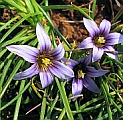 | |
| MaltaWildPlants.com by Stephen Mifsud |

|
| |
|
|
 |  |  |  |
| External Links: |
|
Kickxia spuria (Round leaved Fluellen) |
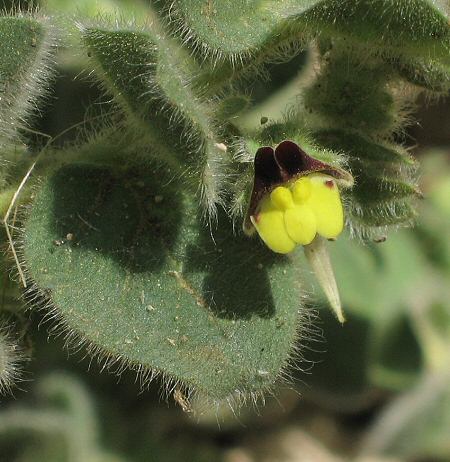
Kickxia spuria (PLANTAGINACEAE.)
Images for this profile are taken from the Maltese Islands after year 2000. |
|
| Nomenclature |
Species name : | Kickxia spuria (L.) Dumort. | Authority : | Carl von Linne, Sweden, (1707 - 1778) ;
Barthelemy Charles Joseph Dumortier, Belgium, (1797 - 1878) | Synonyms :
(basionym or principal syn.) |
|
Plant Family : | | English name(s) : | Round leaved Fluellen, Round-leaved Cancerwort, Blunt-leaved Fluellen | Maltese name(s) : | Xetbet l-art safra | Status for Malta : | Indigenous. Present on the Maltese islands before man | Name Derivation : |
Kickxia: Named for Jean Kickx (1775-1831), a professor of botany, pharmacy and mineralogy or perhaps for his son Jean Kickx (Jr.) (1803-1864) who was also a famous scientist. (Latin origin ); 2 = Named for Jean Kickx, Sr., (1775-1831) professor of botany, pharmacy and mineralogy and/or his son Jean Kickx (Jr.) (1803-1864). (Latin);.
spuria: False or not being what it purports to be (hence spurious), previously used for the synonym plant name Antirrhinum spurium because the author reckoned that despite it was described as an Antirrhinum, it is likely in the wrong genus. Indeed later it was placed in its own genus - Kickxia. (Latin origin ); 2 = False, doubtful "spurious" used for a species which is believed to have other names (Latin).
| Remarks : | |
|
| Morphology and structure |
PLANT STRUCTURE: |
Character | Growth Form | Branching | Surface |
Description | | | |
General
Picture | 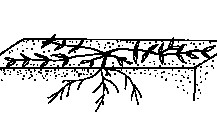 |  | 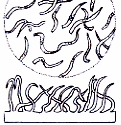 |
|
LEAVES: |
Character | Arrangement | Attachment | Venation |
Description | | | |
General
Picture |  | 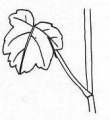 |  |
| |
Character | Leaf Shape | Leaf Margin | Remarks |
Description | | | Leaf Texture Due to the numerous villous hairs, the leaves are very soft when touched. |
General
Picture |  |  |  |
|
FLOWERS: |
Character | Colour | Basic Flower Type | No. of Petals | No. of Sepals |
Description | Yellow and deep purple | | 2 Upper and lower lip-like petals resting on each other. | 5 |
General
Picture | | 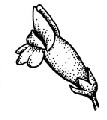 |  |  |
| |
Character | Inflorescence | Description | Ovary | Stamens |
Description | | The flower consists of a tube with 2 lip-like petals at one end and a closed narrow tube (called the spur) at the other. The upper lip has 2 lobes and is deep purple, while the lower lip is bright yellow and has 3 lobes. Inside there are the 4 stamens and pistil very close to each other. | | |
General
Picture |  |  | 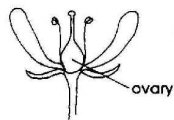 |  |
| |
Character | Scent | Average Flower Size | Pollen Colour | Other Notes |
Description | None or very faint | 4mm x 4mm x 12 mm (Length x Breadth x Depth including spur). | White | - |
|
SEEDS: |
Character | No. Per Fruit | Shape | Size | Colour |
Description | 16-20 | Irregular cylindrical or chunky shape (Seed coat possess several ridges). | 1mm | Dark Brown |
General
Picture |  |  |  |  |
|
FRUIT AND OTHER BOTANICAL DATA: |
Character | Fruit Type | Colour of Fruit | Subterranean Parts | Other Notes |
Description | | Beige | | - |
General
Picture | 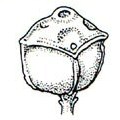 |  |  |  |
|
|
| Plant description and characters | |
Life Cycle: | Annual. |
Growth Form: | THEROPHYTE (annual plants, herbaceous) |
Habitat: | Valleys, arable land, field margins and lanes. |
Frequency: | Frequent |
Localities in Malta: | Frequent plant, found at Chadwick Lakes (under one of the bridges), and nearby fields. Also found in fields and waysides in Gnejna and Dwejra (Malta). |
Plant Height: | 20-50cm. |
| Jun-Sep |
Protection in Malta: | Not legally protected till the last update of this website (2/Mar/2022) |
Red List 1989: | Not listed in the Red Data Book of the Maltese Islands |
Poison: | |
This annual plant is seen in Malta at the beginning of Summer in arable fields and valleys. It is an decumbent, branching plant, with
stems reaching about 40cm in length or more. Most of the plant is covered with soft hair. The stem have many rounded leaves stacked over each other, spaced from each other by a short distance and gradually decreasing in size up the stem.
The leaves are alternate (the lower ones nearly opposite), and at first sight they look to be sessile but on a closer examination they reveal to have a short petiole. Leaves are generally broad oval - nearly circular, while the cauline leaves tend to have a more lanceolate shape. Leaf outline is generally entire. The most striking characteristic of the leaves is the soft and smooth (silky) texture. This is due to their numerous, soft, fine, short hairs; described as pubescent. Leaves at the middle part of the stem are generally 48mm long and 38mm wide but size varies - lower leaves can reach up to 70mm in length.
In contrast to the leaves, flowers have a long slender stalklet which grows out from the leaf axils. Usually flowering branches grows out from the leaf axils of the main stem, and each flowering branch give rise to several flowers as a unilateral raceme. The flower is very small and have the typical bi-laterally symmetrical shape of the snapdragon/figwort family they belong to. The flower has 2 lips resting each other which form a tubular structure inside which are the reproductive organs. The tube ends to a narrow, curved-up, cream-coloured spur. The flower is supported from its centre by 5 green, oval sepals. The length of the flower (lips to spur) is about 12mm, while the lips are 4-5mm wide. The upper lip has 2 deep purple lobes while the lower lip has acontrasting bright yellow with 3 smaller lobes. The inner edges of the lower lip are also tainted with deep purple.
Inside, at the roof of the upper lip, there are the 4 small stamens which are so close to each other, that their anthers touch and looks to be as a single unit. Anthers are covered with white pollen. The tiny pistil has a superior ovary and a single style that is hidden between the stamens.
The fruit is a very small capsule (2-3mm) which is mostly covered by the calyx. Initially the capsule is green and when ripe it hardens and becomes light brown. The dehiscent capsule splits open and release it tiny (1mm) dark brown seeds. Each capsule hold a small number of seeds - not
more than 20.
|
|
| Information, uses and other details |
Nativity and distribution
Kickxia possess about 46 species which are, native to West African islands, North Africa, Europe and Asia. Kickxia spuria and possibly Kickxia commutata have become naturalised in southern Africa. [WWW-109]
Soil type
Well-drained chalky soils. More frequently on calcareous clays than Sharp-leaved Fluellen, but less frequently on sands. [WWW-112]
Germination and Seed Dormancy
Seeds of Kickxia spuria, Polygonum persicaria and Sinapis arvensis buried in soil at depths of 1, 5, 10 and 20 cm, after 42 months the losses of undamaged seeds were estimated and found to be greater at 1 cm depth for K. spuria and S. arvensis but not for P. persicaria. Germination tests showed: (1) that germination was generally greater after burial than after dry storage; (2) that the germination capacity of S. arvensis increased with time whereas that of K. spuria decreased, as did that of P. persicaria, but more slowly; (c) that germination capacity increased with depth of burial and temp. and light requirements were reduced in buried seed; (d) that there were seasonal fluctuations in the germination capacity, samples taken in spring performing better than autumn ones; and (e) that only spring samples of P. persicaria germinated at low temp. and light was always required [WWW-113].
Sub species
There are 2 sub species of this plant which are:
Kickxia spuria subsp. spuria
Kickxia spuria subsp. integrifolia
According to reference [332] the subspecies found in Malta is the integrifolia
Not much information has been found about this particular plant species. If you can supply further info to be included in this profile, please do not hesitate to email us pr by using the form found at the botom of this page. Full reference credits will be given accordingly. Thank you for your support!
|
|
| | |

